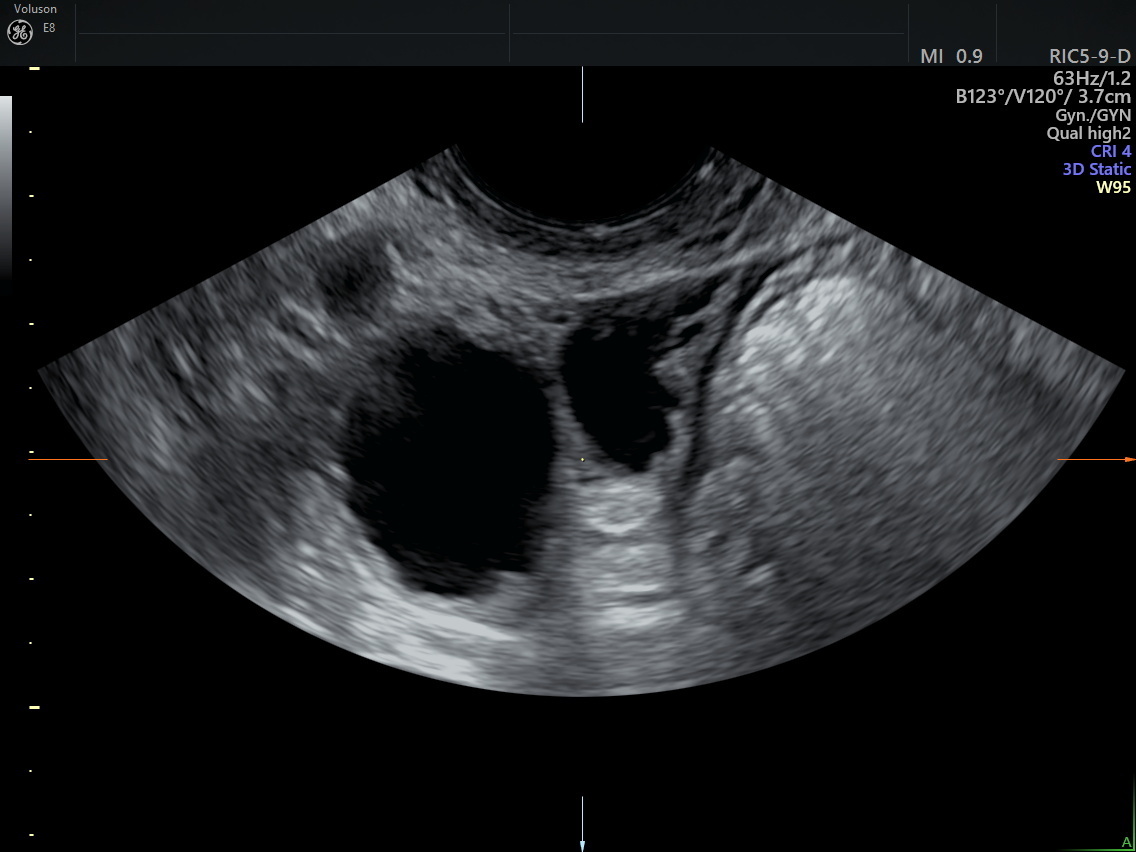Name 4 risk factors for Pelvic Inflammatory Disease
Early sexual contact, multiple sexual partners, history of STD, history of PID, IUD, douching, invasive pelvic procedure
Name the fallopian tube pathology that has a pointed beak near isthmus and whose endosalpingeal folds are "cogwheel" like
Hydrosalpinx
What 2 labs/tests would show up as elevated for a tubo-ovarian abscess?
Leukocytes, erythrocyte sedimentation
Inflammation of the peritoneum may be caused by what?
T or F- Endometriosis is the ectopic placement of functional endometrial glands or stromal outside of the endometrium found only in the pelvic area
False- Endometrial glands or stromal can be found anywhere in the body, but it is most common in the pelvis
Patients with a history of PID are at risk for what kind of pregnancy?
Ectopic pregnancy
Name the 4 signs and symptoms present for all 3 types of abnormal fallopian tubes
Asymptomatic, pelvic fullness, pelvic discomfort, low-grade fever
Name 3 sonographic characteristics of a tubo-ovarian abscess
multiloculated, septations, irregular margins, internal echoes, posterior enhancement, gas, complex mass distorting pelvic anatomy
What lab value would be seen with peritonitis. Would it be increased or decreased levels?
Increased leukocytes/WBC
What kind of endometriosis is most common?
External- Endometriomas or seeded endometrial tissue found throughout the pelvis
Name 5 signs and symptoms of PID
Severe pelvic pain, fever, leukocytosis, shaking/chills, vaginal discharge, irregular vaginal bleeding, rebound tenderness, pain with cervical manipulation, dyspareunia, RUQ or flank pain
The sonographic evidence of a hyperemic fallopian tube is consistent with:
1. Pyosalpinx
2. Hydrosalpinx
3. Endometriosis
4. Salpingitis
4. Salpingitis
Sonographically describe this tubo-ovarian abscess
(Voluson Club, 2019)
Hypoechoic/anechoic, irregular borders, posterior enhancement, complex, debris
Name 3 anatomical areas that may be associated with pelvic peritonitis?
Bladder, bowel, ureter, and adnexal area
Name 3 differentials for Endometriosis
Hemorrhagic cyst, tubo-ovarian abscess, cystic ovarian neoplasm, solid ovarian tumor, ectopic pregnancy
Which of the following is not true regarding PID?
1.PID often results in pelvic adhesions
2.PID often results in dyspareunia
3.PID often results in endometritis
4.PID often results in leukopenia
PID often results in leukopenia
What kind of fallopian tube abnormality is shown?
 (Obstetrics & Gynaecology, 2014)
(Obstetrics & Gynaecology, 2014)
Pyosalpinx
What can a tubo-ovarian abscess be treated with?
Antibiotics
What is the sonographic appearance of peritonitis?
loculated fluid, debris or gas within, free fluid in pelvis or gutters
Name 4 signs and symptoms of endometriosis
Dysmenorrhea, chronic pelvic pain, bleeding, dyspareunia, infertility, pelvic adhesions
Which of the following may present like a gallbladder disease in a patient with PID?
1.Ovarian torsion
2.PCOS
3.Fitz-Hugh-Curtis Syndrome
4. Endometriosis
3.Fitz-Hugh-Curtis Syndrome
What part of an abnormal fallopian tube is most dilated compared to the interstitial?
Ampulla
Name 1 pathology and 1 syndrome that can be a sign and symptom of a tubo-ovarian abscess
Peritonitis and Fitz-Hugh-Curtis Syndrome
Name 2 pathologies peritonitis is associated with
Appendicitis, ovarian torsion, post surgical intervention of abdominal wall, infection of blood stream or lymphatic system
Describe the 2 forms of endometriosis
Internal- located in the myometrium (adenomyosis)
External- localized->endometrioma diffuse->small implants throughout the pelvis, may mimic PID
